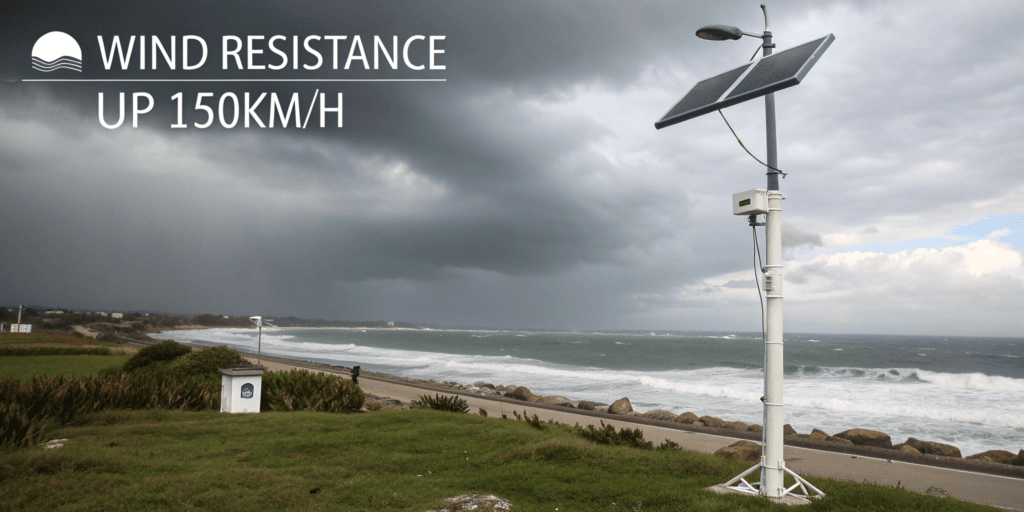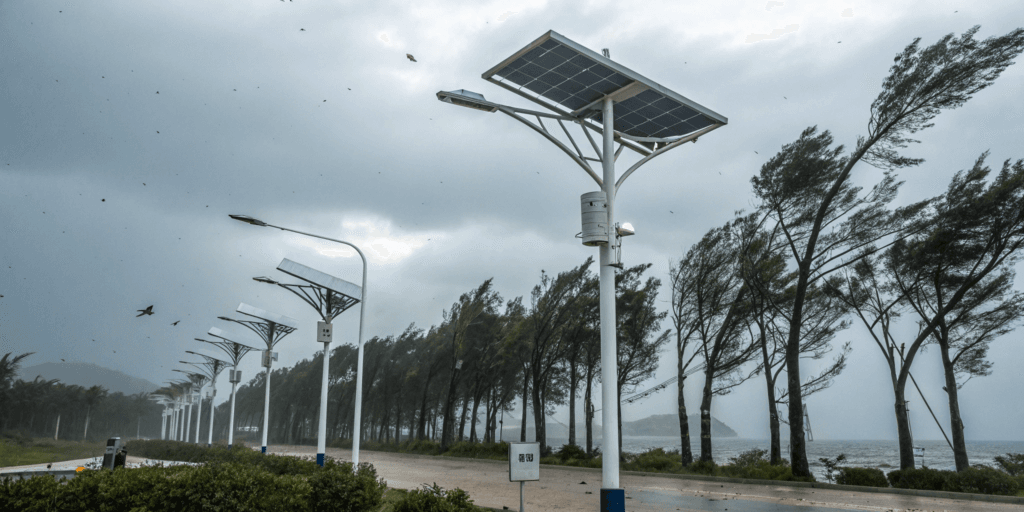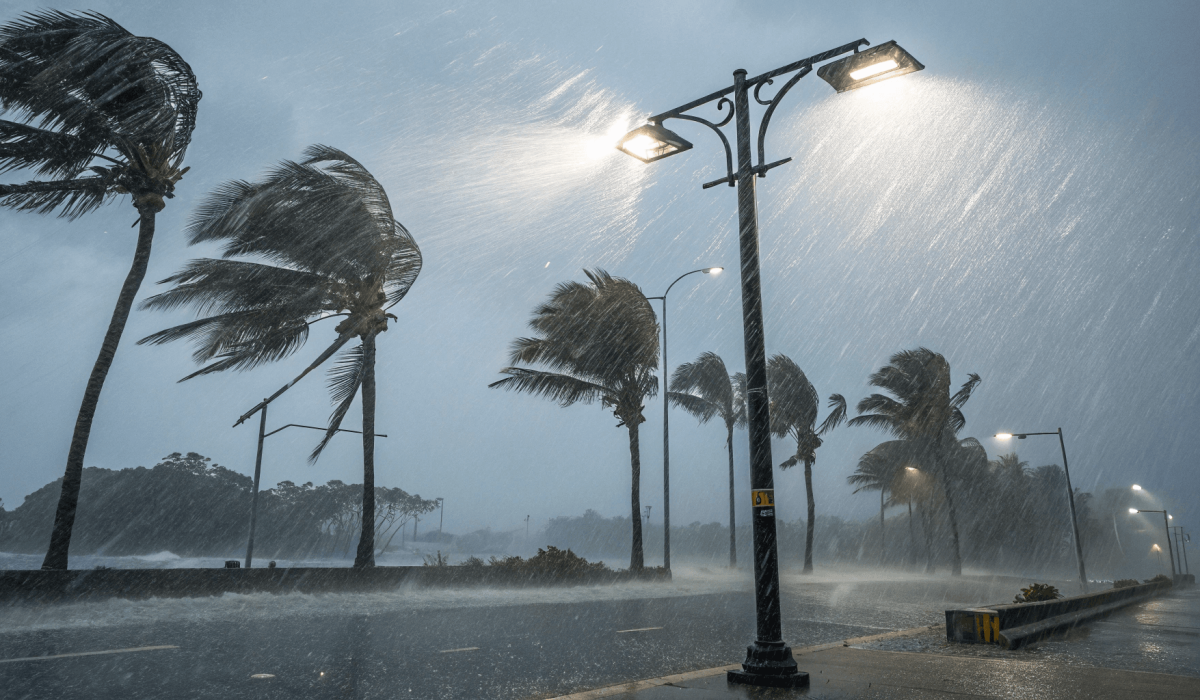Outdoor solar lighting needs more than just brightness—it needs to survive whatever nature throws at it. From scorching sun to blizzards and typhoons, not all All-in-One Solar Lights are built to last, especially under extreme environmental conditions. If you’re investing in solar lights for a long-term outdoor project, you need to know how to spot durable, weather-resistant models.
Durability in solar lighting is non-negotiable for performance and longevity. Choosing the right all-weather solar light helps avoid corrosion, water damage, and energy failure—saving you money and hassle over time. Let’s break down what to look for.
Key Environmental Challenges All-in-One Solar Lights Must Endure
Outdoor lights must handle a wide range of harsh conditions. Here's what they’re up against:
- Heavy Rain and Flooding: Poor sealing leads to water ingress, damaging internal circuits.
- High Temperatures and Sun Exposure: Excessive heat degrades battery life and can warp low-grade materials.
- Freezing Conditions: Cold reduces battery performance and may crack cheap casings.
- Snow Accumulation: Snow-covered panels reduce energy absorption, causing power shortfalls.
- Strong Winds and Storms: Poorly mounted lights or weak brackets can collapse under pressure.
- Dust and Sand (Desert Climates): Dust reduces panel efficiency and wears down moving parts.
Essential Features of Weather-Resistant, High-Quality Solar Lights

To perform reliably in extreme conditions, premium All-in-One Solar Lights are built with specific protective features:
-
IP Rating (Ingress Protection)
- Choose IP65 or higher for full waterproof and dustproof protection.
- Example: IP65 = dust-tight and protected against low-pressure water jets from any angle.
-
Material Quality and Build
- Die-cast aluminum housing is preferred over plastic for strength and heat resistance.
- Anti-corrosive coatings are essential in coastal or humid areas.
- Tempered glass shields over LEDs add impact resistance.
-
Battery Technology
- LiFePO₄ (Lithium Iron Phosphate) batteries offer a wide temperature range and longer lifespan.
- Safer than standard lithium-ion or lead-acid alternatives.
- Must include BMS (Battery Management System) with overcharge and over-discharge protection.
-
Solar Panel Efficiency and Protection
- Monocrystalline panels perform better in cloudy or cold conditions.
- Look for encapsulated panels with tempered glass and anti-dust coatings.
-
Wind Resistance and Structural Design
- Wind ratings should exceed 120–150 km/h for storm-prone areas.
- Reinforced mounting brackets and aerodynamic designs help reduce vibration and wind load.
Certifications and Testing Standards That Prove Durability
Before buying, always check if the product meets recognized certifications:
| Certification | Meaning |
|---|---|
| CE / RoHS | Safety and environmental compliance in the EU |
| ISO 9001 | Quality management system certification |
| IEC Standards | International electrical safety and performance standards |
| Wind Tunnel Tested | Verified physical stability under high-speed wind |
| Real Outdoor Aging | Verified longevity based on real-time field conditions |
Lights that pass these tests are far more likely to deliver consistent results over many years.
Smart Features That Improve Performance in Harsh Weather

Today’s premium solar lights aren’t just durable—they’re also smart:
- Intelligent Dimming: Reduces brightness during cloudy days to extend battery life.
- Motion Sensors: Saves power in low-activity periods (great for rural or industrial areas).
- Remote Monitoring: Mobile apps or dashboards to check battery status, solar input, or faults.
- Automatic Cleaning (optional): Useful for dusty or snowy regions where panel obstructions are common.
Common Mistakes to Avoid When Selecting Weather-Resistant Solar Lights
Many failures in solar lighting systems come from preventable oversights:
- Focusing only on wattage or price: High wattage doesn’t guarantee durability.
- Trusting a basic IP65 label: Some low-cost models are poorly sealed despite the rating.
- Using indoor-grade batteries: These can’t survive large temperature swings.
- Skipping certifications: Lack of third-party testing is a red flag.
- Ignoring field performance data: Always ask for case studies or testing evidence.
How Hitech China Ensures Long-Lasting Performance in Extreme Environments
At Hitech China, we engineer All-in-One Solar Lights to survive—and thrive—in the world’s toughest environments:
- Premium Aerospace-Grade Housing: Corrosion-proof, heat-resistant, and rugged enough for industrial zones.
- Smart Energy Management: Adapts output to weather conditions and battery charge levels.
- Extreme Climate Testing: Our models are validated through real-world simulations—deserts, snowfields, typhoon zones.
- Tailored Consultation: We assess your region and recommend products based on actual weather data.
- Reliable Support: Long warranties and on-site assistance are available for large projects.
Case Studies: Real-World Use in Harsh Conditions

Coastal Installation (SE Asia)
- Challenge: Humid air, salt corrosion.
- Solution: Anti-corrosion aluminum + marine-grade coating.
- Result: 3+ years of uninterrupted lighting.
Desert Road Project (UAE)
- Challenge: Dust storms, 45°C daytime heat.
- Solution: Fully sealed IP66 unit + anti-dust panel coatings.
- Result: Maintained >95% panel efficiency over 18 months.
Snowy Village (Northern Europe)
- Challenge: -20°C winters, snow coverage.
- Solution: Panel tilt + heated battery enclosure.
- Result: Daily performance even during peak winter.
Typhoon Zone (South China)
- Challenge: 140 km/h wind gusts.
- Solution: Reinforced anchor brackets and aerodynamic design.
- Result: All units remained operational post-storm.
Conclusion
If your solar street lights can’t stand up to local weather, they’re not a solution—they’re a liability. When selecting All-in-One Solar Lights for harsh environments, look for robust materials, smart energy systems, proven certifications, and region-specific design.
Don’t gamble with durability—consult Hitech China to find or customize a solution built for your region.
Frequently Asked Questions (FAQ)
What does IP65 mean for solar lights?
It means the light is fully protected from dust and from water jets projected from any angle. Ideal for rain and dust resistance.
Can solar lights survive in heavy snow and rain?
Yes—if built with proper sealing, snow-shedding panel angles, and cold-tolerant batteries.
Which battery type is best for cold or hot weather?
LiFePO₄ (Lithium Iron Phosphate) batteries offer the widest temperature range and best durability in extreme climates.
Do I need special solar panels for cloudy or dusty environments?
Yes—monocrystalline panels with anti-dust coatings are best for low-light or dusty regions.
What’s the expected lifespan of a high-quality all-in-one solar light?
With proper components and maintenance, you can expect 8–10 years of reliable service.


